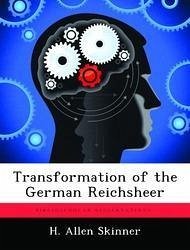Following the end of the World War I, the major combatants engaged in varying degrees of reorganization and reformation to incorporate the lessons learned from the conflict. Germany faced the pressing need to quickly reconstitute and reorganize her armed forces to meet both external and internal threats. The Reichsheer (German Army from 1919-1935) was the only major combatant to conduct a thorough and systematic study of the tactical and operational lessons of the war. The Reichswehr transformational efforts in doctrine, reorganization and training laid the foundation for the expansion and early World War II successes of the Wehrmacht. The research question of this thesis was to explore exactly how the Reichsheer leaders transformed their warfighting doctrine. This thesis also looks closely at the underlying organizational philosophy, and how the philosophy guided the Reichsheer leadership cadre in affecting change within the organization. Reichsheer doctrinal manuals, directives and contemporary journal articles, supplemented with American observer reports, served as primary source material for the thesis. The thesis will clearly link the importance of a leader creating and articulating an envisioned end state in successfully effecting change within a military organization.
Hinweis: Dieser Artikel kann nur an eine deutsche Lieferadresse ausgeliefert werden.
Hinweis: Dieser Artikel kann nur an eine deutsche Lieferadresse ausgeliefert werden.








